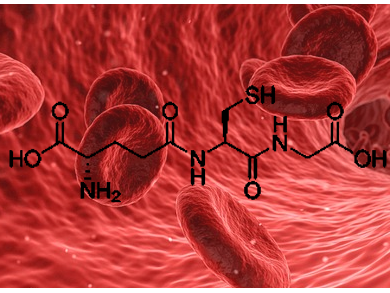Glutathione (GSH), the most abundant natural antioxidant in cells, protects them from damage and regulates many important functions by concentration changes. Currently, however, real-time measurements of GSH levels inside cells are not possible.
Jin Wang, Baylor College of Medicine, Houston, TX, USA, and colleagues have developed a fluorescent probe, called RealThiol (RT; C20H17N3O7), that can measure real-time changes in GSH concentration in living cells based on a reversible reaction.
So far, irreversible chemical reactions that capture all GSH inside cells were used to get a one-time snapshot of its concentration. In 2015, Wang and his colleagues published a proof of concept that a reversible reaction that captures and releases GSH could be used to measure GSH inside the cell [1]. The reaction between RealThiol and GSH is based on a Michael addition. Now they have optimized the probe and made the reaction much faster: The forward and the reverse reaction can be completed within one minute. This allows following the dynamic changes of GSH in living cells. The method requires very small amounts of the probe, which results in little toxicity and minimal changes of the perturbance of the antioxidant capacity in the cells. The probe can be used in various applications, from microscopy to cell sorting experiments.
The researchers used their method to measure enhanced antioxidant capability of activated neurons and dynamic GSH changes during ferroptosis, a form of cell death. According to them, RealThiol is a new tool to investigate the roles GSH plays in, e.g., aging, health, and diseases such as cancer, Alzheimer’s, Parkinson’s, cardiovascular conditions, diabetes. The team is currently developing GSH probes with different sub-cellular specificities.
- Quantitative real-time imaging of glutathione,
Xiqian Jiang, Jianwei Chen, Aleksandar Bajić, Chengwei Zhang, Xianzhou Song, Shaina L. Carroll, Zhao-Lin Cai, Meiling Tang, Mingshan Xue, Ninghui Cheng, Christian P. Schaaf, Feng Li, Kevin R. MacKenzie, Allan Chris M. Ferreon, Fan Xia, Meng C. Wang, Mirjana Maletić-Savatić, Jin Wang,
Nature Communic. 2017, 8.
https://doi.org/ 10.1038/ncomms16087
[1] X. Jiang, et al., Quantitative imaging of glutathione in live cells using a reversible reaction-based ratiometric fluorescent probe, ACS Chem. Biol. 2015, 10, 864–874. https://doi.org/10.1021/cb500986w




